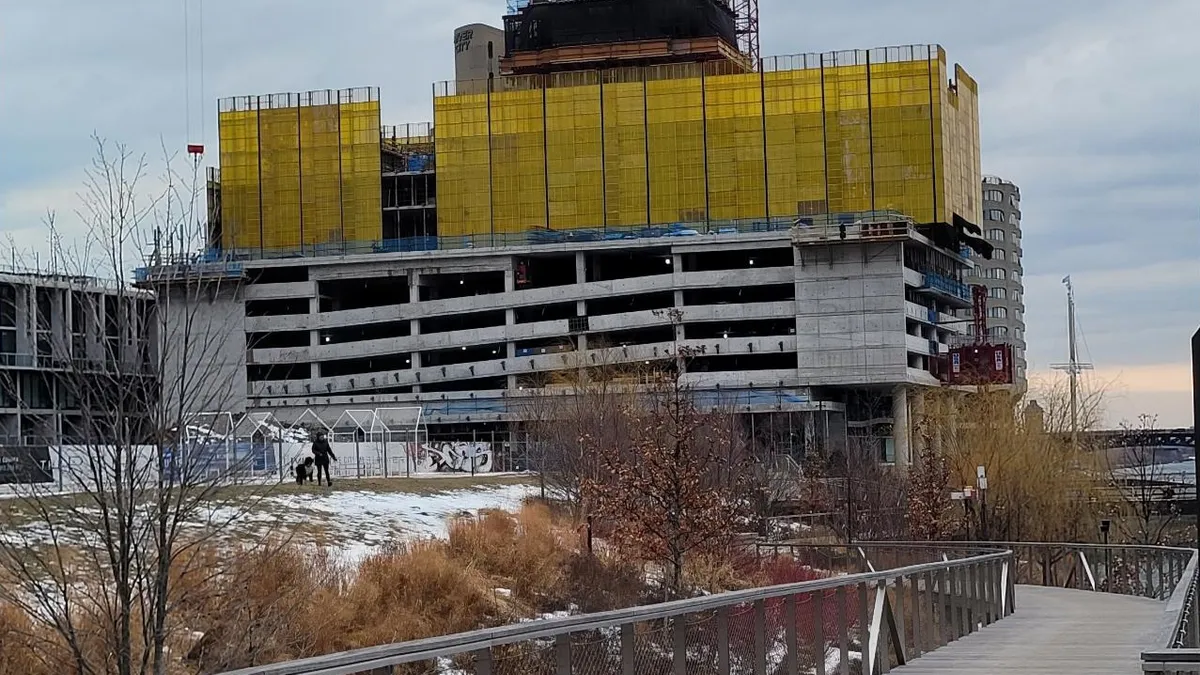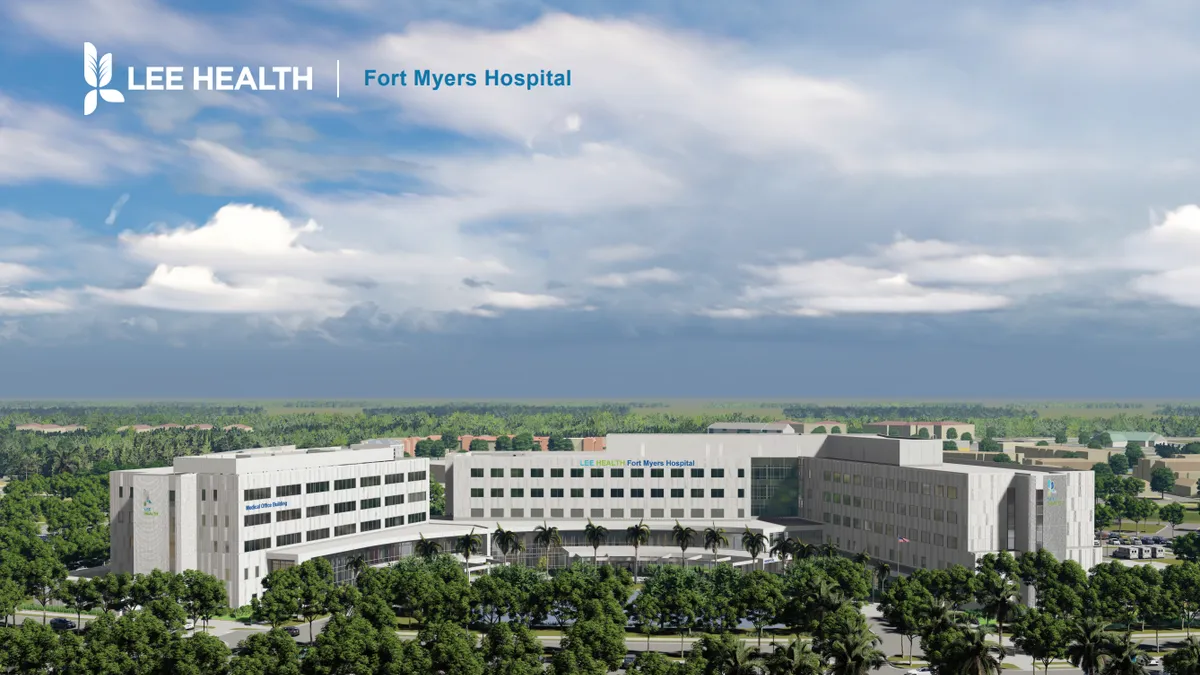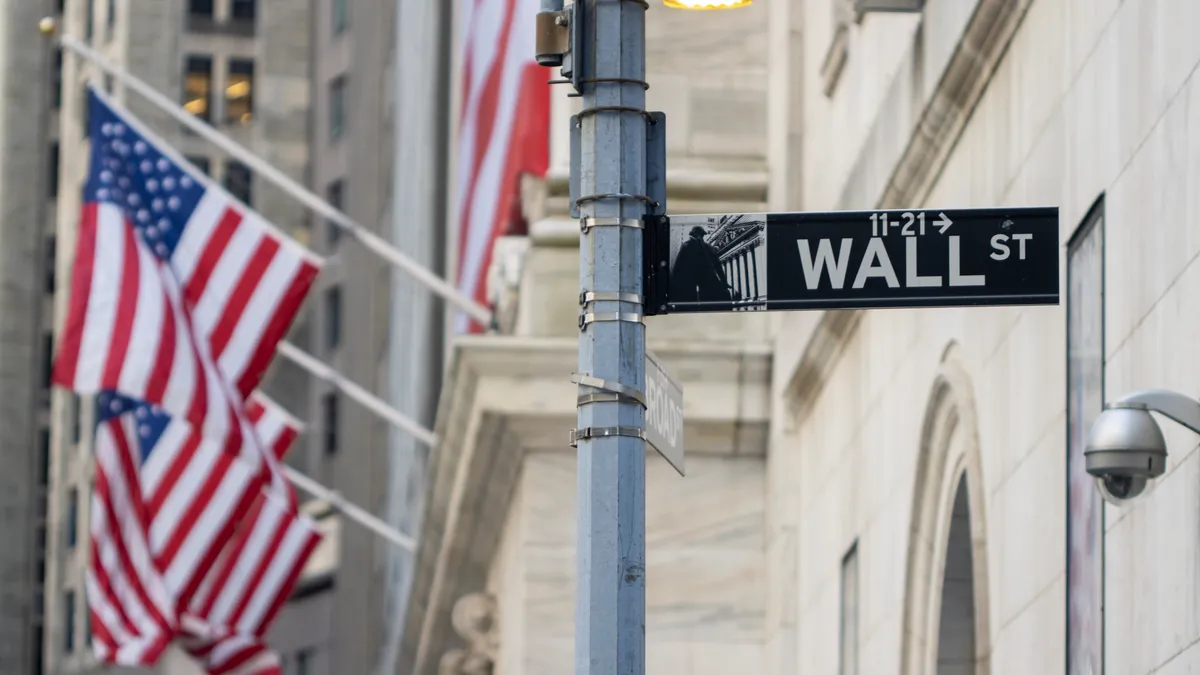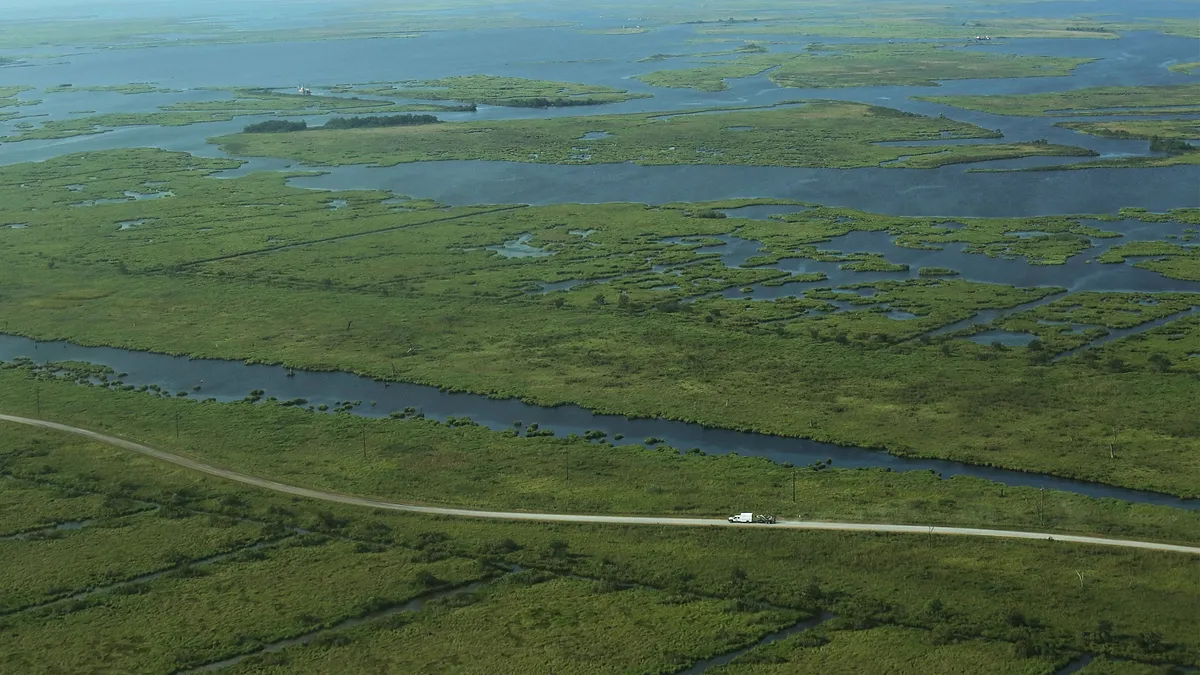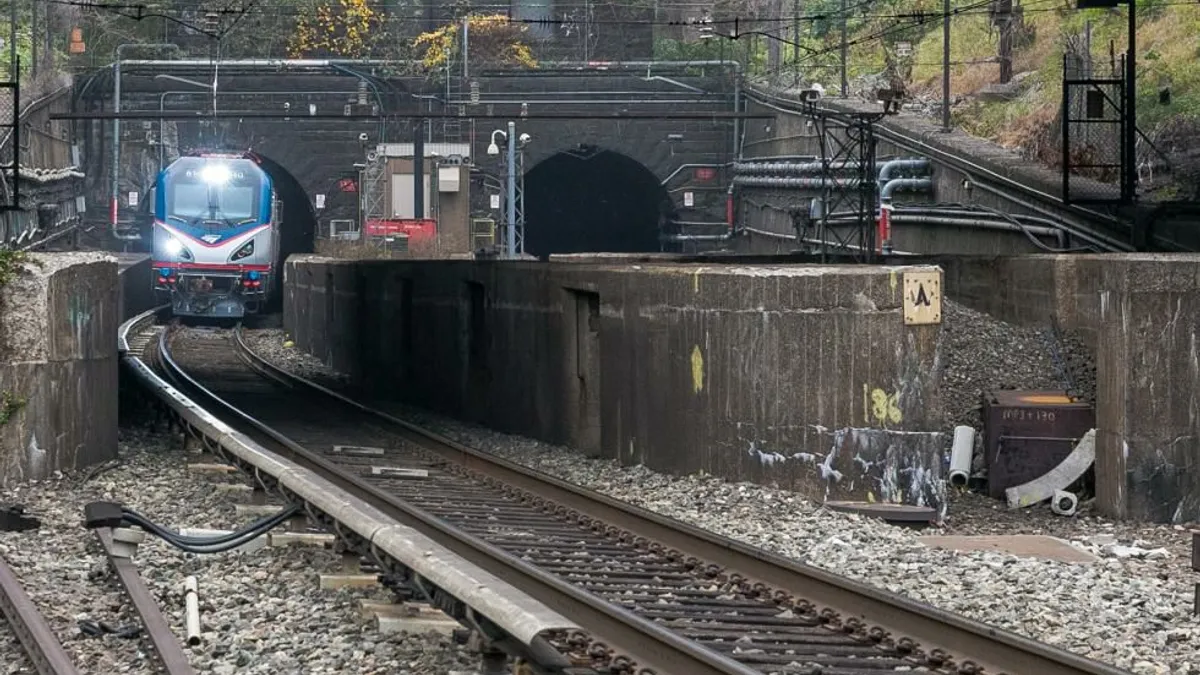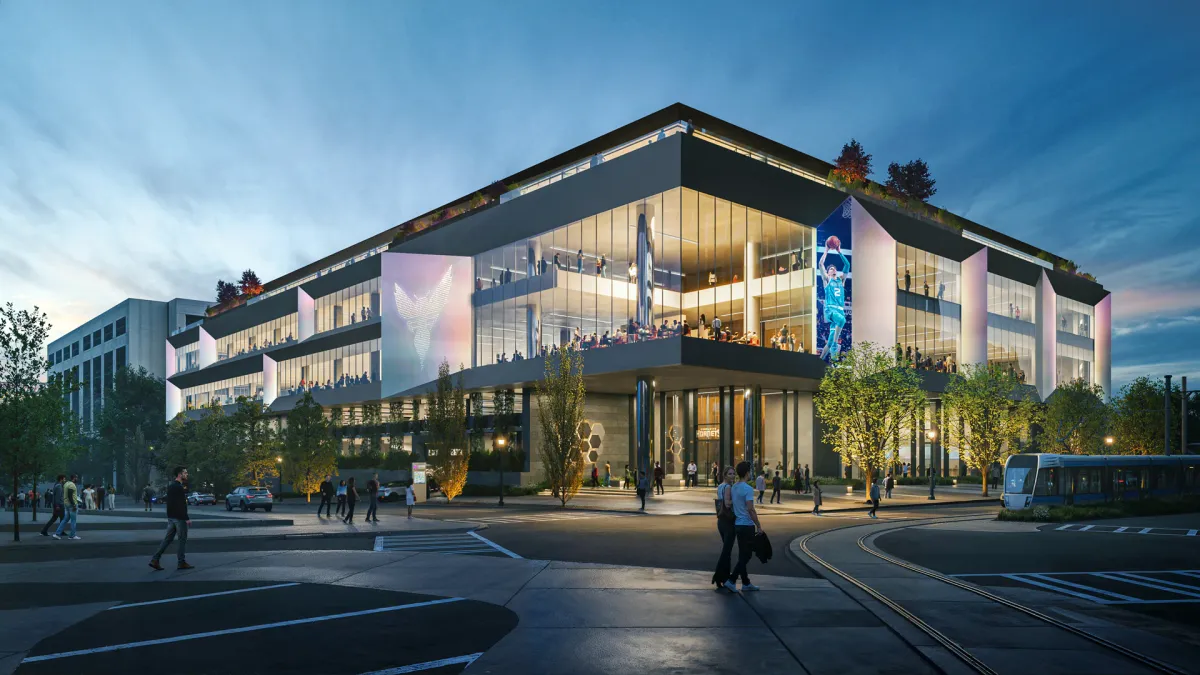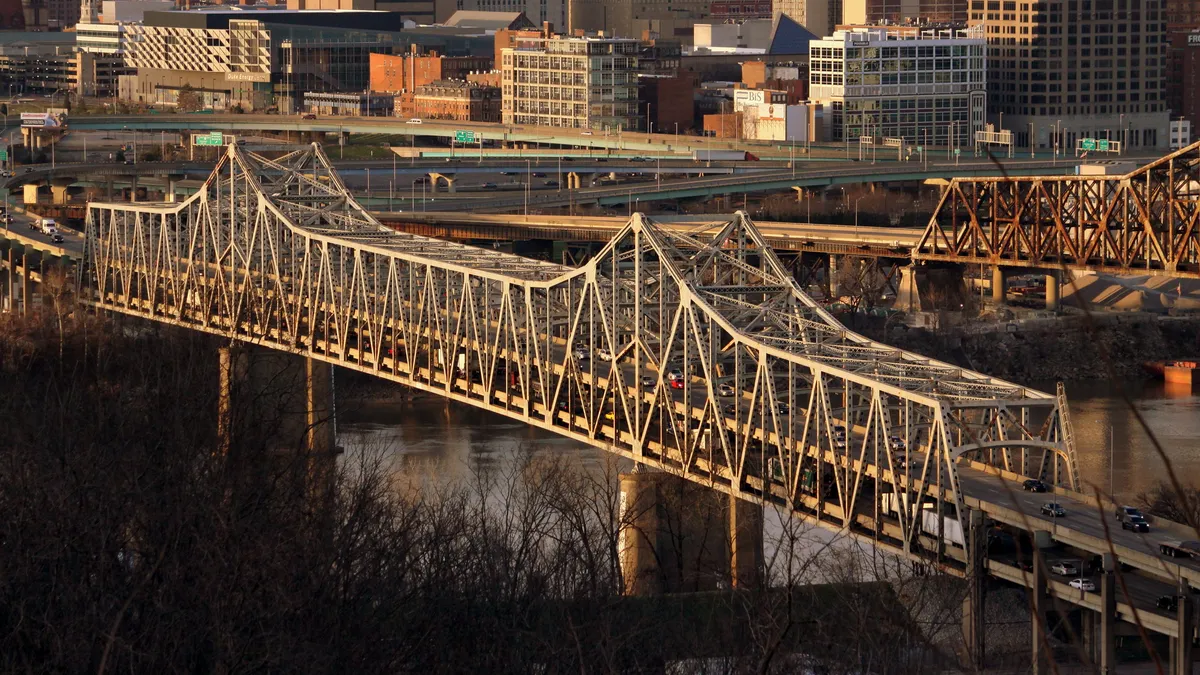In Chicago, new high-rise buildings going up near the Loop is nothing unusual. But one such tower currently under construction is getting attention for its innovative construction material: low-carbon concrete.
Concrete is the most widely used construction material in the world, but it is known for its sizable carbon footprint due to the chemicals and processes involved throughout the material's life cycle. According to a report from international policy institute Chatham House, the cement industry alone is responsible for roughly 8% of global greenhouse gas emissions.
An emerging solution is concrete that uses less of the standard carbon-intensive materials and production processes. Chicago-based McHugh Concrete created a proprietary low-carbon concrete mix for The Reed, a new 41-story, 440-unit luxury residential tower designed by Perkins and Will for Lendlease's Southbank development in Chicago.
"This was the first project that we saw that had actual specifications that were targeted at the concrete aspect," said Eamonn Connolly, director of engineering at McHugh Engineering Group, a sister company to McHugh Concrete. "It challenged us to raise our game and creatively think about the concrete material."
Construction using the new concrete mix is already complete through the 10th floor of the structure. When the tower is finished next year, it's expected to be Chicago's first high-rise built with low-carbon concrete.
Setting up for sustainability
Lendlease prioritizes sustainability and has set goals of net-zero carbon from its business activities by 2025 and zero carbon (without offsets) by 2040. The company contacted McHugh Concrete with the request to come up with a more climate-friendly concrete.
"It's really fun trying to figure out ways to construct buildings that have a smaller carbon footprint," said Ted Weldon, executive manager of development at Lendlease Chicago. "It's a very interesting challenge and something that is one of our passions."
McHugh developed the proprietary concrete mix with collaboration from concrete company Oremus Material. The team discovered that they could replace up to 60% of the Portland cement used in most conventional concrete mixes with other materials. Portland cement constitutes about 95% of all cement produced, but its production is energy intensive and the process emits significant amounts of carbon dioxide.
They primarily substituted waste materials that otherwise would end up in landfills or the environment: flyash, a byproduct of coal-fired power plants; slag, a byproduct of steel production; and silica fume, a byproduct from the production of silicon alloys. McHugh has been using these materials in their concrete mixes for more than a decade, but they upped the percentages in the low-carbon mix for The Reed.
A new concrete mix's performance is always unclear at first and extra testing is necessary to prove its performance characteristics before using it on a project, said Max Levin, concrete project executive at McHugh Concrete.
"When we did additional testing, we were keeping a much closer eye on strength gain," he said.
According to the team, the mix is more durable than conventional concrete; it has a denser mix with fewer voids and less permeability. They predict that it will last up to 30 years longer than conventional concrete.
"If you have a denser, less permeable mix, you quantifiably reduce the rate of corrosion and extend the durability of your structure," Connolly said.
The low-carbon mix has a smoother appearance and is lighter in color than conventional gray concrete, which positively affects a building's ability to absorb, store and release heat. Heat transfer occurs more slowly with the lighter-toned concrete, so the temperature inside remains more stable, allowing a building's HVAC system to run more efficiently.
Marketable Mix
A drawback of the new low-carbon concrete is that it comes at a premium. Currently, it adds about 1% to 2% to the overall cost of a project. But that is projected to change with more widespread use.
"The price will probably be very comparable to traditional mixes" once more widespread adoption of lower-carbon concrete occurs, Levin said.
Despite the added costs, both Lendlease and McHugh intend to incorporate this concrete into many future projects.
"It's really important to us to be as innovative as we can, looking for all ways that we can reduce our carbon footprint when we build our buildings," Weldon said. "We are willing to take slightly less of a return on investment to build a building that is… more efficient and constructed in a more-efficient manner."
He emphasizes that the low-carbon concrete, and sustainable features in general, are highly marketable. Increasingly, clients and investors are seeking sustainable building construction; they are often even willing to pay more for it. Building occupants are progressively becoming more environmentally focused and some will pay higher rents in a building with greater sustainability efforts.
"But the benefits are not only about our financial return," Weldon said. "We are so focused on sustainability, and I think it's important for every one of us to do our part."
Lendlease and McHugh already consider using the low-carbon concrete in a high-rise a huge advancement, but they'll continue working toward additional sustainable innovations.
"Our clients who are interested in this are going to push and challenge us to do even better still in terms of embodied carbon," Connolly said. "This solution we developed isn't the end of the road, it's another step along the road."


